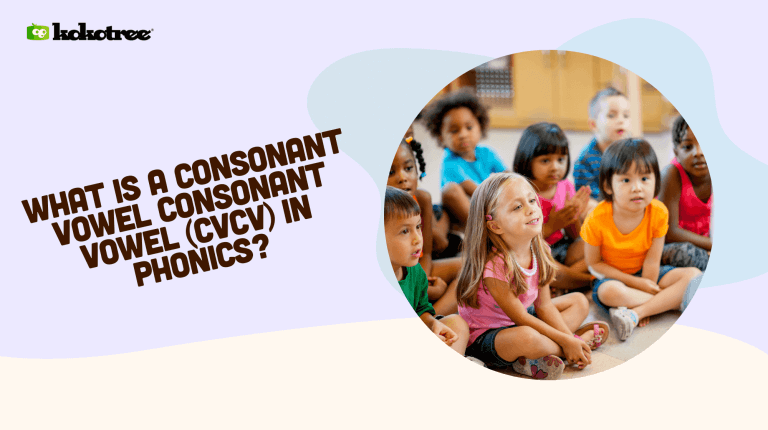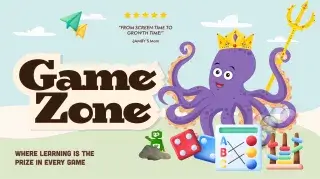

Written by: Kokotree
Last updated:

As a parent, you understand the importance of helping your child develop strong reading and pronunciation skills. One effective way to do this is by introducing them to the Consonant Vowel Consonant Vowel (CVCV) pattern in phonics. In this blog post, we’ll explore how CVCV words, like ‘mama’ or ‘toto,’ play an essential role in your child’s language development. By recognizing and decoding CVCV words, your young learner can build a solid foundation in both reading and pronunciation. So, join us as we dive into the exciting world of phonics and discover how CVCV words can benefit your child’s educational journey.
A Consonant Vowel Consonant Vowel (CVCV) in phonics is a pattern of words that consist of alternating consonants and vowels. These words, such as ‘mama’ and ‘toto,’ are essential for early language development as they help learners enhance their reading and pronunciation skills. The CVCV structure paves the way for children to decode more complex word patterns as they progress in their reading journey.
Phonics is an essential method for teaching children how to read and write by associating sounds with letters and letter combinations. The CVCV pattern, a fundamental building block in phonics, helps children easily grasp the concept of decoding words by providing straightforward, memorable examples.
When children encounter CVCV words, they can easily identify individual sounds due to the clear separation of consonants and vowels. This simplicity allows them to sound out words independently, effectively boosting their confidence in reading and speaking. By mastering CVCV words, kids lay a solid foundation for tackling more complex word structures in the future.
As your child begins to familiarize themselves with the CVCV pattern, you can support their learning journey in various fun and engaging ways:
Introducing your child to word families, or groups of words that share a common pattern, can be a helpful way to expand their vocabulary while reinforcing CVCV structures. With fun games like rhyming flashcards, you can effortlessly engage your child and solidify their understanding of the CVCV pattern.
When choosing books for storytime, look for stories that incorporate CVCV words. As your child reads along, point out examples of the CVCV pattern to help them practice decoding these words. This strategy reinforces the importance of CVCV words while fostering a love for reading.
Incorporating a learning app for kids into your child’s educational routine can be a valuable resource for practicing CVCV words. With modern advancements in technology, many apps are available that specifically focus on phonics and offer interactive, age-appropriate games and activities for kids. These apps assist in reinforcing concepts, keeping your child genuinely excited to learn, and continuously test their skills.
Encourage older siblings and family members to participate in the CVCV learning process. By working together on exercises, games, and reading sessions, your child will not only benefit from the support of loved ones but develop essential social skills as well.
Setting your child up for success in reading and pronunciation involves more than just introducing consonant-vowel-consonant-vowel (CVCV) words. Here are a few additional strategies to further support their learning journey:
Before diving into the CVCV pattern, ensure that your child has a strong grasp of individual letter sounds. Make learning more engaging by playing sound recognition games, such as asking your child to identify the sound a letter makes when you hold up a flashcard, or encouraging them to match items around the house with their starting letter sound.
Children learn in various ways, so incorporating multi-sensory approaches when teaching CVCV words can be highly beneficial. For instance, you can:
Practicing CVCV words is just the beginning. Keep tabs on your child’s progress and provide constructive feedback to help them overcome any challenges. Offer praise and encouragement when they make improvements or master a new word. This support will keep their enthusiasm high, motivating them to continue learning.
Remember that each child learns at their own pace, so it’s essential not to pressure them into mastering CVCV words too quickly. Be patient and provide ample opportunities for practice. As your child becomes more comfortable with CVCV words, they will naturally gain the skills and confidence to read and decode more complex words.
By implementing these strategies alongside the introduction of consonant-vowel-consonant-vowel (CVCV) words, you’re providing a comprehensive approach to helping your child develop a strong foundation in reading and speech. Enjoy the process, and have fun watching your child grow into a confident reader and speaker.
In this frequently asked questions (FAQ) section, we address common queries regarding consonant-vowel-consonant-vowel (CVCV) words and phonics. Find the answers you seek to help support your child’s reading journey and enhance their language development.
The CVCV pattern is a word formation consisting of alternating consonants and vowels. Examples of CVCV words include ‘mama’ and ‘toto.’ By teaching children to recognize and decode CVCV words, you can help them develop critical reading and pronunciation skills.
CVCV words are important because they provide a simple and effective way for children to learn and practice decoding words. They help young learners build a strong foundation in reading and pronunciation, ultimately preparing them for more complex word structures as they progress.
Phonics is a method used to teach children how to read and write by connecting sounds with letters and letter combinations. It helps children break down and decode words, which is a vital skill in developing reading fluency and comprehension.
Word families are groups of words with similar patterns, often sharing a common ending or beginning sound. In relation to CVCV words, teaching word families reinforces the CVCV pattern, making it easier for children to identify and read new words with a familiar structure.
Incorporate playful activities like rhyming flashcards, multi-sensory approaches, reading books featuring CVCV words, using learning apps, and collaborating with family members to create an enjoyable and supportive learning environment.
Some examples of CVCV words include ‘mama,’ ‘toto,’ ‘dodo,’ and ‘baba.’ These simple words with alternating consonants and vowels are ideal for introducing children to the CVCV pattern in reading.
Focus on sound recognition, use multi-sensory approaches, create CVCV word art projects or flashcards, and incorporate CVCV words in everyday conversations or storytime. Additionally, you can integrate CVCV words into fun games and activities.
Every child learns at their own pace, so the time it takes for a child to learn CVCV words can vary. Be patient, provide consistent support, and offer ample opportunities for practice to help your child master the CVCV pattern in reading.
After mastering CVCV words, you can introduce your child to more complex phonics patterns, such as consonant-vowel-consonant (CVC) words or consonant blends. These additional patterns will continue to build their reading proficiency and strengthen decoding skills.
If your child is familiar with individual letter sounds and is beginning to decode simple words, they may be ready to learn CVCV words. Check for their understanding of basic phonics concepts and ability to identify both consonants and vowels.
Yes, incorporating learning apps designed for teaching phonics and CVCV words can be a valuable resource. Many apps are available that offer interactive, age-appropriate games and activities for kids, making learning both exciting and accessible.
If your child struggles with CVCV words, try different strategies or learning methods to identify what works best for them. Provide additional support and practice, and be patient as they work through the learning process. Remember, each child learns at their unique pace.
Books featuring CVCV words, learning apps, and websites dedicated to early childhood education and phonics can be great resources. Additionally, engaging in conversations with your child’s teacher or other parents can provide valuable tips and suggestions for teaching CVCV words.




